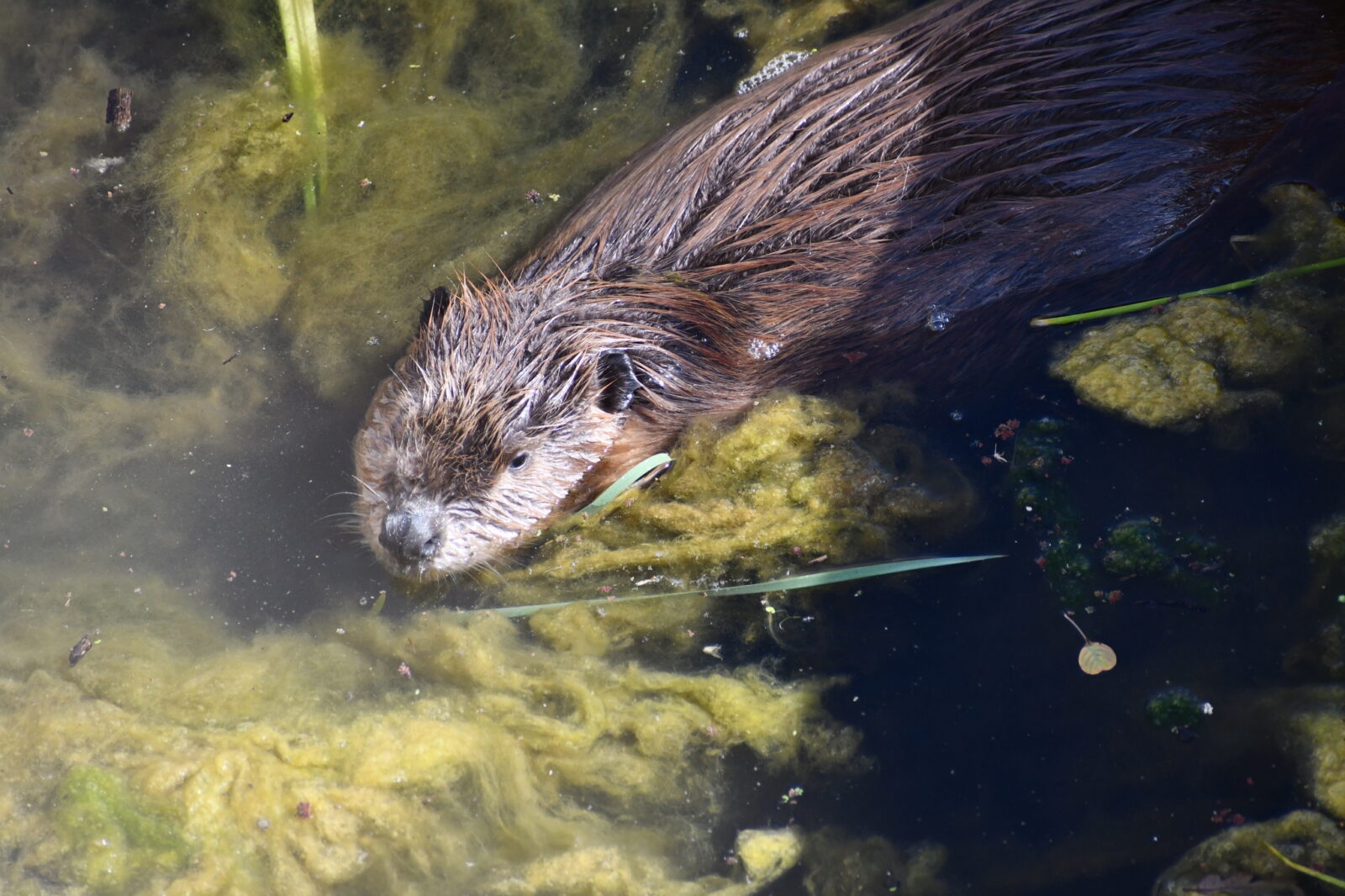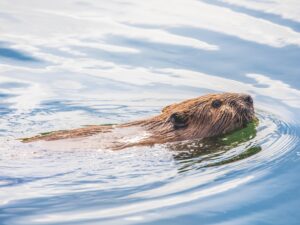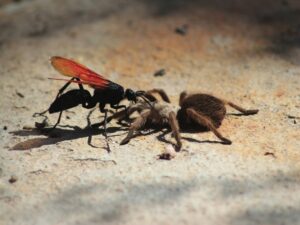On the Los Gatos Creek Trail, right next to Highway 17, the sun dapples between willows and sycamores. I’ve reported on beavers for nearly a decade, including in my book Water Always Wins, yet I’m amazed to find them here, and not just because we’re surrounded by miles of suburban sprawl. I grew up in Los Gatos in the ’70s and ’80s, when it was still semirural: the high school had an agriculture program, our yard was sprayed with pesticide by helicopter to combat the Mediterranean fruit fly, and friends lived on unpaved streets and kept horses and chickens. Still, the only wildlife I remember were ducks and geese at Vasona Park and deer in the Santa Cruz mountains.
MAIN STORY
Believing in the Power of Beavers
California’s beavers have been by turns hunted, protected, and neglected—even parachuted away to distant forests. Today, the embattled rodent is finding new appreciation for its ecological work. By Erica Gies.
Yet other locals have seen beavers in the area from at least the 1990s, long before they famously returned to Martinez in 2006. Retired Santa Clara Valley Water employee Jeff Hopkins told me he remembers seeing the beavers’ handiwork in Lexington beginning around the early to mid-1990s. “I saw the beavers throughout my employment. We always went to see them and their tree cutting ability.” Jae Abel, a fisheries biologist with Valley Water, recalls seeing a beaver in a percolation pond downstream of Vasona Park in the early 1990s. My classmate Erica Cosgrove reports having photos of a dead beaver she saw in 2008 when the reservoir was drained for repairs.
Exactly how the beavers got there is harder to pin down. One story has CDFW biologists relocating beavers from the Delta into Lexington reservoir just above Los Gatos in the mid- to late-’80s. Department employees recounted this tale a decade ago to Rick Lanman, the semi-retired doctor who has co-authored scientific papers documenting beavers’ history in the area. CDFW, however, wrote in a recent email that: “The Bay Delta Region staff has not found any documentation related to CDFW biologists relocating beavers from the Delta into Lexington reservoir in the mid- to late-‘80s. This remains unconfirmed.”
Abel heard a different story about the beavers’ origins—one passed along by two people who were directly involved. Abel prefaces his recollections by saying, “I consider this all secondary information . . . I didn’t write this down.” In the late ’90s an employee at Santa Clara County’s Vector Control District told Abel that beavers took up residence in the Alameda Flood Control Channel in the early ’80s. The employee was involved in removing them.
Infrastructure managers wanted the beavers gone but worried about public outcry. One of them asked a Valley Water board member where they could park some beavers. The board member knew a landowner near Elsman reservoir in rugged territory atop the Los Gatos Creek watershed, who agreed to accept the beavers into his reach of the creek. A few years later, Abel bumped into the guy. “We just started chatting. And he said, ‘Oh, yeah, that was me.’” According to the landowner, said Abel, “They didn’t stay on his property.” They settled in Lexington reservoir downstream, then continued to explore.





